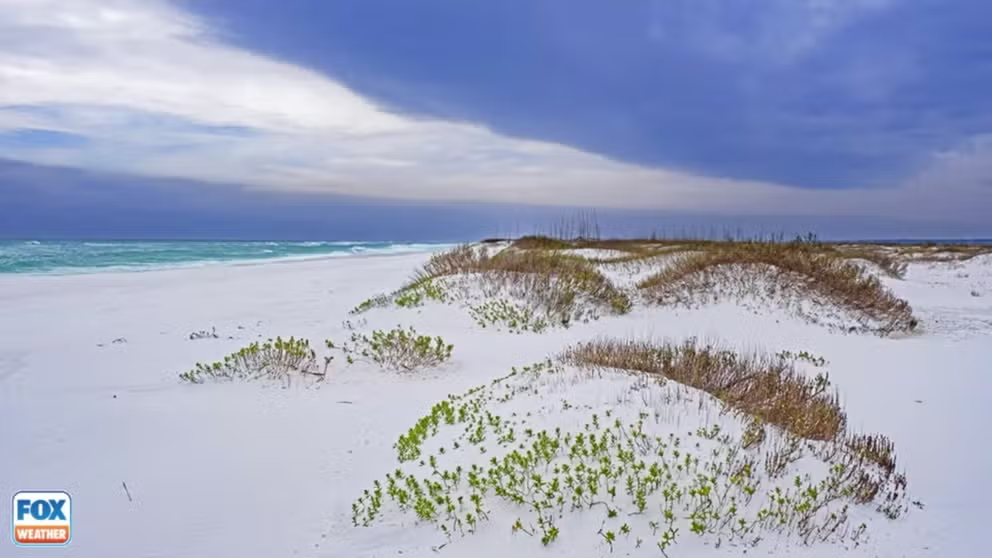Top 5 most colorful beaches in America
From the brilliant white sands of Gulf Islands National Seashore to the purple sands of Pfeiffer Beach, sand coloration is just one more example of the pageantry our country offers.
Colors of America's best beaches
From the brilliant white sands of Gulf Islands National Seashore to the purple sands of Pfeiffer Beach, sand coloration is just one more example of the pageantry our country offers.
There are a variety of colors seen in coastal sediments across America.
From the brilliant white sands of Gulf Islands National Seashore to the purple sands of Pfeiffer Beach, sand coloration is just one more example of the pageantry our country offers.
Sand comes from many locations, sources and environments. According to NOAA, it forms when rocks break down from weathering and eroding over thousands and even millions of years.
The color of the sand depends on the parent rock from which the beach sediments are created.
According to the National Park Service, the additional coloration of coastal sediments may occur as a result of the influence of color-producing minerals such as hematite (red), limonite (yellow), magnetite (black) and olivine (green).
FOX Weather has compiled a list of our favorite colorful spots while researching beaches across the U.S.
HERE ARE THE TOP 10 BEST SECRET BEACHES IN THE US
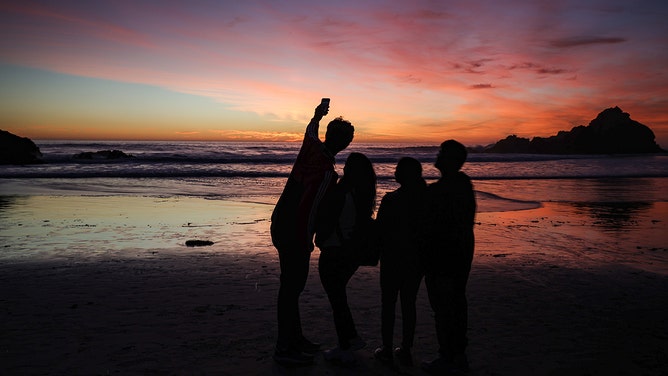
A family takes a selfie at Pfeiffer Beach during sunset in Big Sur, California, United States on December 24, 2022.
(Tayfun Coskun/Anadolu Agency / Getty Images)
Purple: Pfeiffer Beach
Many people who visit Pfeiffer Beach don’t stumble across it, according to CaliforniaBeaches.com.
The popular beach in Big Sur is the only place in California where you can find purple sand, according to the site. The sand's unique color comes from the manganese garnet rocks on the cliffs.
Pfeiffer Beach's famous rock arch, Keyhole Rock, is another spectacular sight for people to add to their bucket list.
FOX WEATHER'S NICK KOSIR SEES IF HE HAS WHAT IT TAKES TO BECOME A LIFEGUARD

Punaluu Black Sand Beach is one the most famous black sand beaches on the Big Island of Hawaii.
(John S Lander/LightRocket / Getty Images)
Black: Punalu'u Beach
Punalu'u Beach, one of nature's rarest wonders, is the most famous and largest black-sand beach on the Big Island of Hawaii. It's located on the Kau coast near the town of Naalehu.
Swimming isn't very safe here, but it is a unique experience.
The term black-sand beach in Hawaii has been used only for beaches dominated by grains of black volcanic glass. According to the University of Hawaii, lava flows entering the ocean chill, and their glassy rinds shatter.
The black sand also gets its hue from dark-colored rocks and minerals that are typically found on beaches near volcanic activity. Black-sand beaches are common in Hawaii, the Canary Islands, and the Aleutians, according to the NPS.
ISLE OF PALMS IN SOUTH CAROLINA AMONG BEST BEACH DESTINATIONS ACROSS US
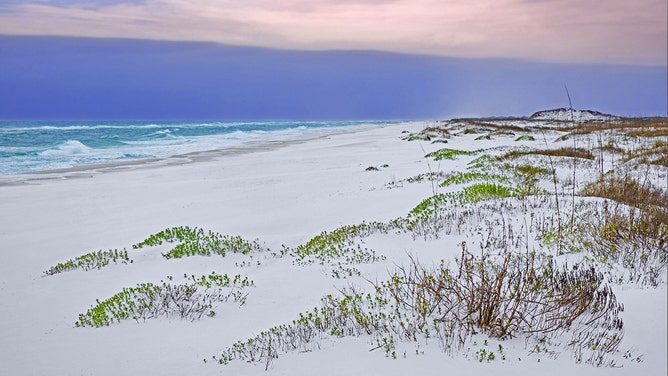
White quartz sand dunes at sunset along the Gulf of Mexico at Gulf Islands National Seashore in winter, Santa Rosa County, Florida.
(Marica van der Meer/Arterra/Universal Images Group / Getty Images)
White: Gulf Islands National Seashore
Millions of visitors are drawn to the Gulf of Mexico each year for Gulf Islands National Seashore's emerald waters, magnificent white beaches, fertile marshes and historical landscapes, according to the NPS.
White sand beaches are typically composed of quartz-rich sediments.
"Due to its hardness and chemical structure, quartz is a very durable mineral that is difficult to weather and erode," the NPS said. "Therefore, quartz is often the most prevalent mineral found in beach sediments."
Created in 1971, this national seashore stretches 160 miles along the northern coast of the Gulf of Mexico in Florida and Mississippi. It includes barrier islands, maritime forests, historic forts, bayous and marine habitats.
HERE ARE THE TOP SUMMER VACATION DESTINATIONS IN THE US
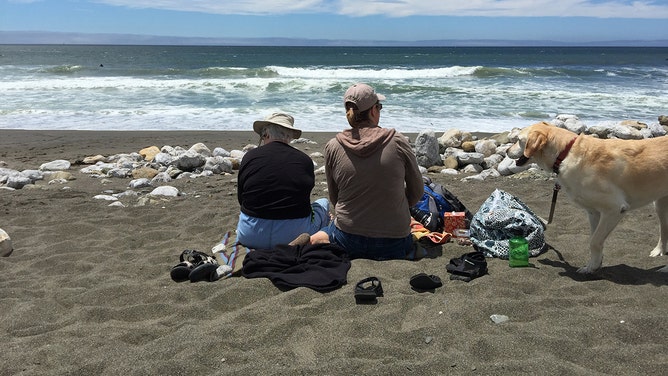
People sit along Rockaway Beach in Pacifica, California, in July 2015.
(Getty Images)
Brown: Rockaway Beach
Many of the beaches up and down the Atlantic coast have brown sand.
If looking out West, the chocolate-colored sandy shore at Rockaway Beach in California is visited by more than 1 million people annually. It's located in Pacifica, a 20-minute drive south of San Francisco.
The tan color seen at most sandy beaches comes from iron oxide, which tints quartz a light brown, and feldspar, which is brown-to-tan-colored in its original form, according to NOAA.
THE STATES WITH THE HIGHEST SKIN CANCER RATES JUST MIGHT SURPRISE YOU
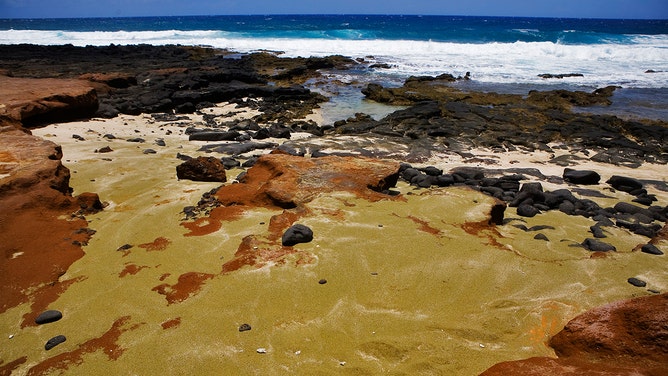
Green sand beach at Ka Lae, South Point, on the big island of Hawaii, Kona.
(Ted Soqui/Corbis / Getty Images)
Green: Papakolea Beach
Papakolea Beach, also known as Green Sands Beach, is one of only four green sand beaches in the world.
The secluded South Point beach is in Mahana Bay near Ka Lae, the southernmost point in the U.S. It's located on the southern tip of the island of Hawaii.
The sparkling green sand is derived from broken olivine crystals created in the eruption of the collapsed Pu‘u Mahana cinder cone that half encircles the beach, according to the University of Hawaii.
However, if you want to see it, your hiking shoes should be worn until at the beach. A moderate hike is involved, but nature has provided a rough path.
